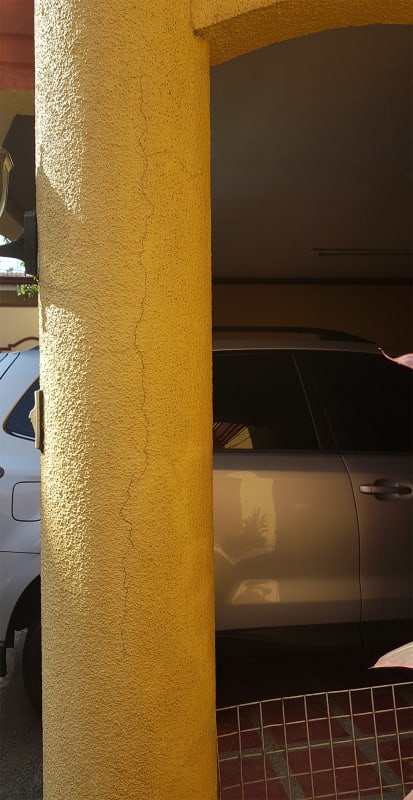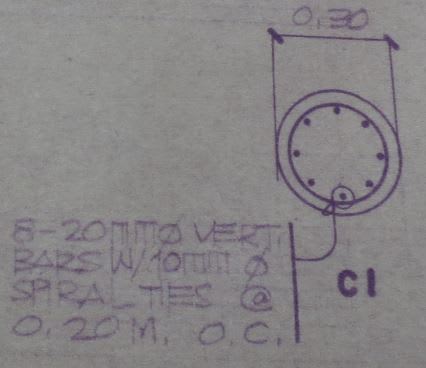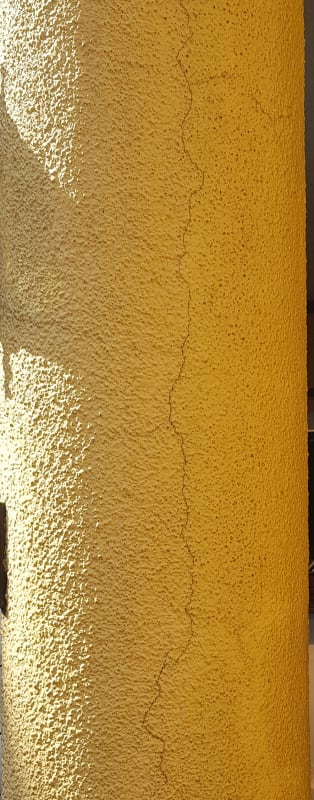This round column measuring 12 inches diameter (0.3 meter) has 8 pcs of 20mm rebar with 10mm spiral ties spaced 8 inches (0.20 meter) apart.


There is a vertical hairline cracks measuring about 1 meter. I'd like to know the following:
1. Usually what caused the vertical hairline crack?
2. Can the rebar inside rust if nothing is done to them?
3. Should carbon fiber be wrapped around it?


There is a vertical hairline cracks measuring about 1 meter. I'd like to know the following:
1. Usually what caused the vertical hairline crack?
2. Can the rebar inside rust if nothing is done to them?
3. Should carbon fiber be wrapped around it?


![[idea] [idea] [idea]](/data/assets/smilies/idea.gif)
